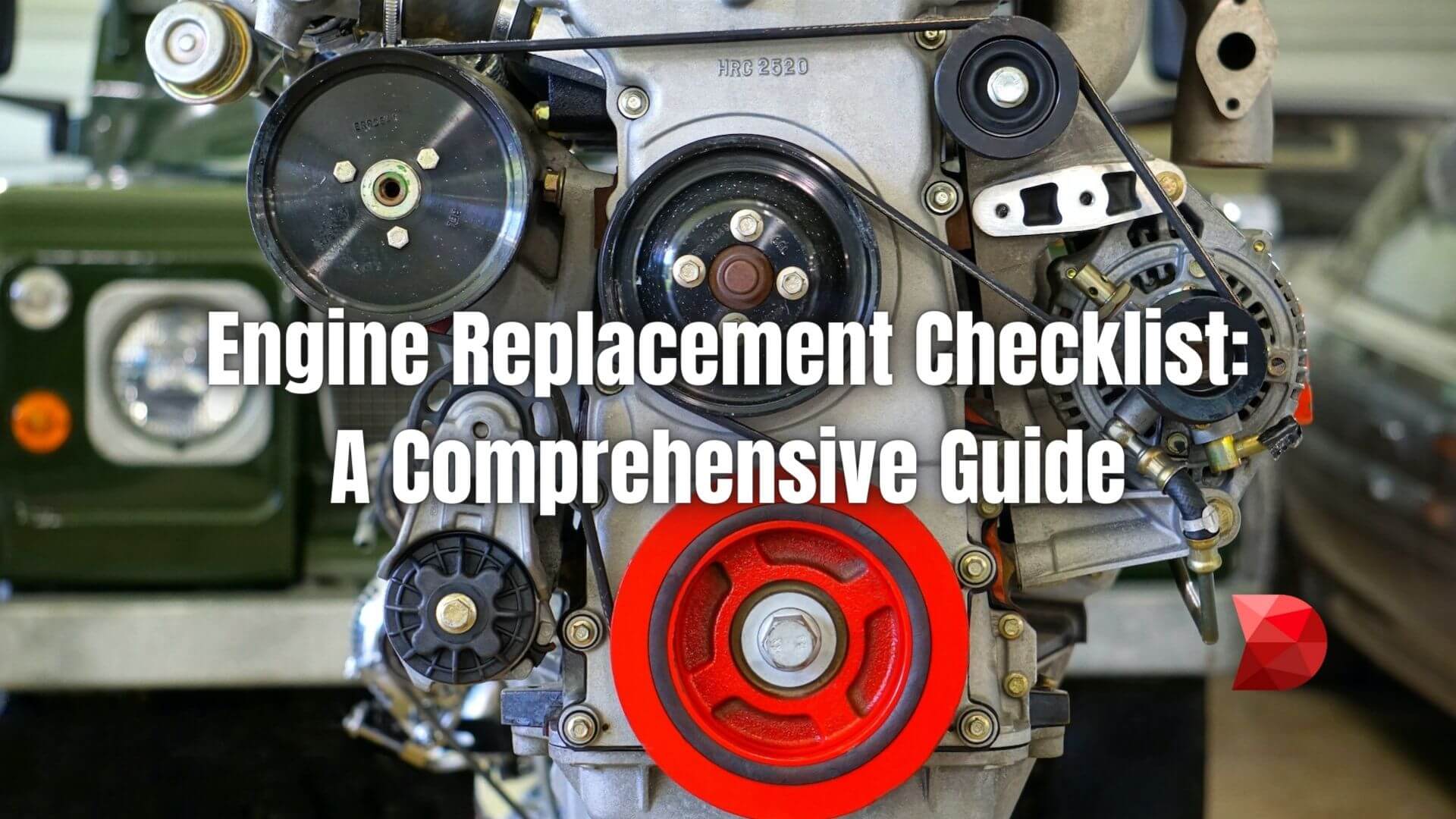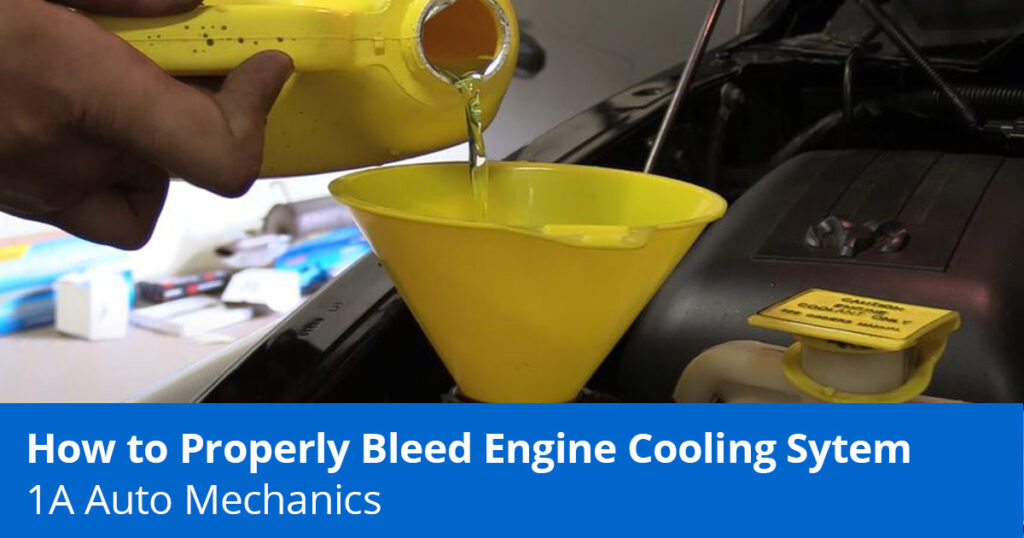This article was updated in July 11, 2023 with new products and information by Mark S. Taylor
To clean coolant off an engine, first, ensure the engine has cooled down completely. Then, use a degreaser or a mixture of water and dish soap to remove the coolant residue.
Maintaining a clean engine is crucial for its optimal performance and longevity. However, spills and leaks can happen, leading to coolant splattering on your engine. The coolant not only leaves behind unsightly stains but can also cause corrosion if not cleaned promptly.
Fortunately, cleaning coolant off an engine is a relatively straightforward process that can be done with common household items. In this article, we will explore the step-by-step method to effectively remove coolant residue from your engine, allowing it to operate smoothly and keeping it in top condition. Whether you’re a car enthusiast or just seeking to tidy up your engine, this guide will provide you with the necessary insights to get the job done efficiently.

Credit: datamyte.com
Contents
Why Proper Coolant Removal Is Important
Engaging paragraph:
Coolant plays a crucial role in maintaining the optimal temperature of your engine. It absorbs heat generated by the internal combustion process and keeps everything running smoothly. However, over time, coolant can accumulate on the engine, leading to potential problems.
In this blog post, we will discuss the importance of properly cleaning coolant off the engine and how it can impact engine performance and longevity, as well as avoiding coolant contamination and damage.
Ensuring Engine Performance And Longevity:
- Regular coolant removal: It’s essential to remove coolant from the engine periodically to prevent build-up. Neglecting this task can result in decreased engine performance due to heat retention and inefficient heat exchange. Cleaning coolant off the engine helps ensure better cooling efficiency and optimal performance.
- Preventing blockages and corrosion: Coolant accumulation on engine components can lead to the formation of blockages, restricting the flow of coolant. This can cause localized overheating and potential damage to the engine. By cleaning coolant off the engine, you can prevent blockages and minimize the risk of corrosion, which can further extend the engine’s lifespan.
- Preserving engine seals and gaskets: Coolant can deteriorate engine seals and gaskets over time. This can result in leaks, which not only lead to coolant loss but also introduce the risk of cross-contamination with other engine components. Properly cleaning coolant off the engine helps preserve the integrity of the seals and gaskets, reducing the likelihood of leaks and associated complications.
Avoiding Coolant Contamination And Damage:
- Preventing coolant mixing: When coolant accumulates on the engine, there is a higher risk of it mixing with other engine fluids, such as oil. Coolant contamination can result in a compromised lubrication system, leading to increased friction, wear, and potential engine damage. Removing coolant from the engine helps maintain the purity of the coolant and prevents contamination.
- Minimizing electrical component damage: Coolant on the engine can reach electrical components, including sensors and wiring. If the coolant is conductive, it can cause short circuits or interfere with proper electrical operation. By cleaning coolant off the engine, you can protect these sensitive electrical components from potential damage and maintain their functionality.
- Preserving the overall cooling system: Cleaning coolant off the engine is crucial for the overall health of the cooling system. When coolant accumulates, it can impede the flow through hoses, pipes, and the radiator, reducing cooling efficiency. By ensuring proper coolant removal, you can maintain the effectiveness of the entire cooling system and avoid potential overheating issues.
Properly cleaning coolant off the engine is vital not only for maintaining engine performance and longevity but also for preventing coolant contamination and damage. Regular maintenance including coolant removal will help keep your engine running smoothly, reduce the risk of complications, and ensure optimized cooling efficiency.
Steps To Easily Remove Coolant From Your Engine
If you’ve noticed coolant stains on your engine and want to remove them quickly and easily, you’ve come to the right place. Cleaning coolant off your engine is a relatively simple process that can be done with a few tools and materials.
In this section, we’ll walk you through the step-by-step process of removing coolant from your engine, ensuring a clean and efficient removal. Let’s get started!
Gather The Necessary Tools And Materials:
Before you begin cleaning coolant off your engine, it’s important to gather all the necessary tools and materials. Here’s what you’ll need:
- Safety goggles and gloves to protect yourself
- A drain pan or container to collect the old coolant
- A funnel to refill the coolant later on
- Coolant flush solution (optional)
- A wrench or pliers to open the drain valve
- Clean rags or towels for wiping up any spills
Prepare Your Engine For Coolant Removal:
To ensure a smooth coolant removal process, it’s essential to prepare your engine beforehand. Follow these steps:
- Allow the engine to cool down completely before starting the removal process.
- Locate the coolant reservoir and drain valve. Refer to your vehicle’s manual if needed.
- Place the drain pan or container underneath the drain valve to catch the coolant.
Drain The Coolant Safely And Efficiently:
Now that you have everything in place, it’s time to drain the coolant from your engine. Follow these steps:
- Put on the safety goggles and gloves to protect yourself from any splashes.
- Use the wrench or pliers to open the drain valve slowly. Make sure the drain pan is positioned correctly to catch the coolant.
- Allow the coolant to drain completely into the pan.
- Once the coolant has stopped dripping, close the drain valve securely.
Properly Dispose Of The Old Coolant:
After draining the coolant, it’s important to dispose of it safely. Follow these guidelines:
- Check with your local recycling or waste management facility for the proper disposal method in your area.
- Avoid pouring the coolant down the drain or on the ground, as it can harm the environment.
- Transfer the old coolant into a proper container and seal it securely for disposal.
Refill The System With Fresh Coolant:
Now that your engine is coolant-free, it’s time to refill it with fresh coolant. Follow these steps:
- Use the funnel to pour the desired amount of fresh coolant into the reservoir.
- Be sure to refer to your vehicle’s manual for the correct coolant type and capacity.
- Allow the coolant to settle for a few minutes before topping it up to the recommended level.
Perform A Coolant System Flush (Optional):
If you want to go the extra mile for your engine’s health, consider performing a coolant system flush. Here are the steps involved:
- Purchase a coolant flush solution from an auto parts store.
- Follow the instructions on the flush solution packaging for the correct dosage.
- Add the flush solution to the radiator and run the engine for the specified duration.
- Drain the flush solution and proceed with refilling the system as outlined earlier.
Following these steps will ensure that you can easily remove coolant from your engine, leaving it clean and ready for optimal performance. Now that you’ve successfully cleaned the coolant off your engine, take time to inspect for any leaks or further maintenance needs.
Remember to adhere to proper safety measures throughout the process. Happy cleaning!
Read More: How to Reset Coolant Temperature Sensor: A Comprehensive Guide
Frequently Asked Questions For How To Clean Coolant Off Engine
How Do I Remove Coolant Stains From My Engine?
To remove coolant stains from your engine, start by ensuring the engine is cool. Mix equal parts water and white vinegar, apply the solution to the stained area, and scrub gently with a brush. Rinse with water and dry thoroughly.
If the stain persists, repeat the process or consider using a specialized engine degreaser.
Can I Use A Pressure Washer To Clean Coolant Off My Engine?
Using a pressure washer to clean coolant off your engine is not recommended. The high pressure can force water into sensitive electrical components, causing damage. Instead, opt for a gentle hand wash using a mild detergent and a soft brush or sponge.
Take care to avoid spraying water directly onto electrical connections.
How Often Should I Clean Coolant Off My Engine?
It’s a good idea to clean coolant off your engine as soon as you notice any leaks or spills. Regularly inspect your engine for coolant stains and clean them promptly. This will help prevent the coolant from corroding or damaging engine components, ensuring optimal performance and longevity.
Conclusion
To sum up, keeping your engine free of coolant is essential for maintaining its performance and long-term functionality. By following the steps outlined in this blog post, you can effectively clean coolant off your engine and prevent any potential damage.
Start by identifying the source of the coolant spillage and then gather the necessary materials to safely clean it. Use a degreaser or a mixture of warm water and mild detergent to carefully remove the coolant residue. Be sure to rinse the area thoroughly to eliminate any remaining traces.
Finally, take precautionary measures to prevent future coolant leaks, such as regularly inspecting the cooling system and promptly addressing any issues. Taking these proactive steps will help preserve your engine’s health and enhance its overall lifespan. So, don’t delay! Implement these cleaning techniques and keep your engine cool and clean for years to come.

